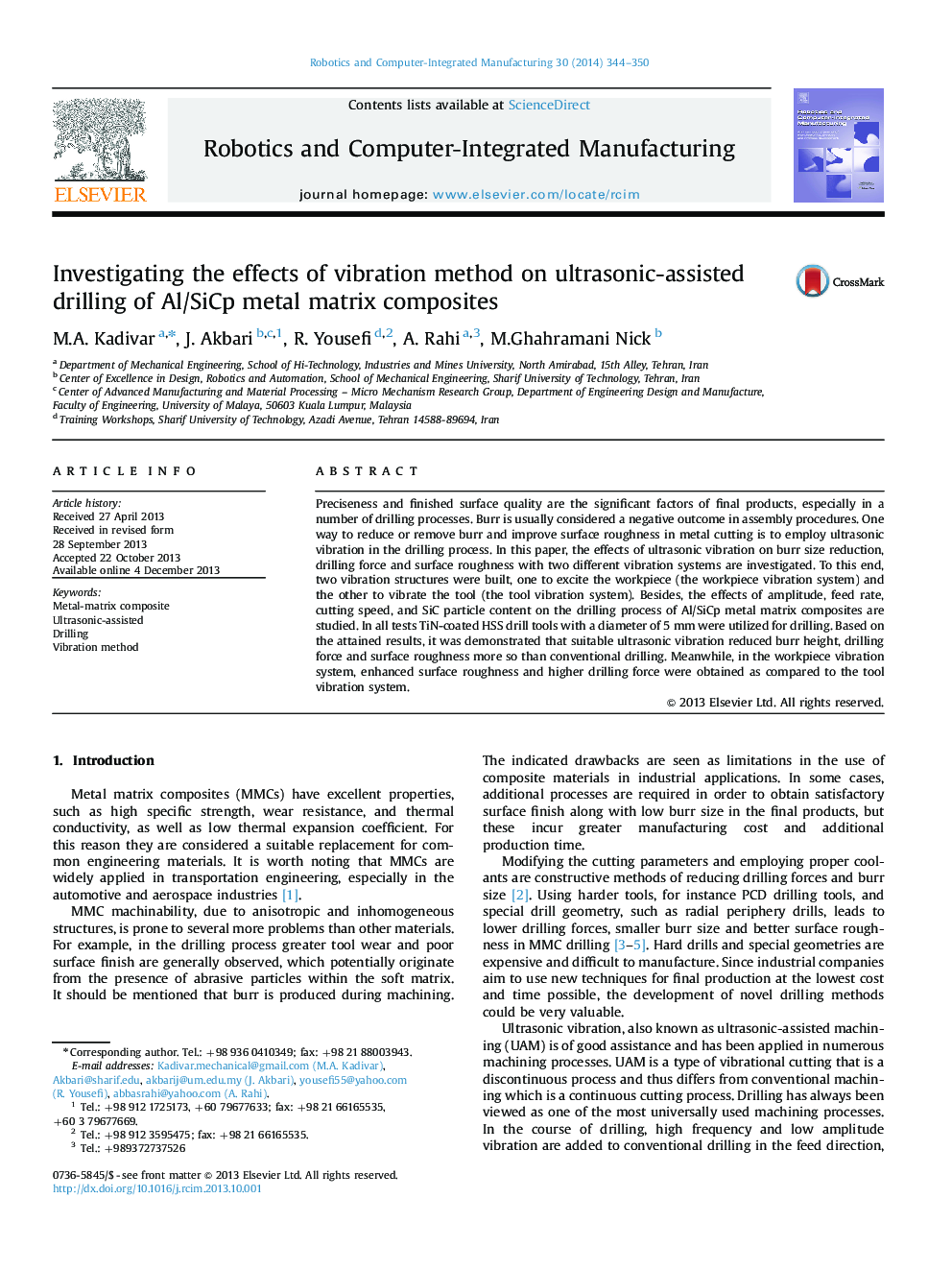| Article ID | Journal | Published Year | Pages | File Type |
|---|---|---|---|---|
| 413974 | Robotics and Computer-Integrated Manufacturing | 2014 | 7 Pages |
•We investigate the effect of the vibration method on the drilling process.•We examine changes drilling force, surface roughness and burr size in 2 different vibration systems.•When actuated-tool system was used lower drilling force, worse surface roughness and higher burr were obtained.•Higher percentage of SiC causes lower burr size.•Drilling force, surface roughness and burr size in ultrasonic assisted drilling were lower than those in conventional drilling.
Preciseness and finished surface quality are the significant factors of final products, especially in a number of drilling processes. Burr is usually considered a negative outcome in assembly procedures. One way to reduce or remove burr and improve surface roughness in metal cutting is to employ ultrasonic vibration in the drilling process. In this paper, the effects of ultrasonic vibration on burr size reduction, drilling force and surface roughness with two different vibration systems are investigated. To this end, two vibration structures were built, one to excite the workpiece (the workpiece vibration system) and the other to vibrate the tool (the tool vibration system). Besides, the effects of amplitude, feed rate, cutting speed, and SiC particle content on the drilling process of Al/SiCp metal matrix composites are studied. In all tests TiN-coated HSS drill tools with a diameter of 5 mm were utilized for drilling. Based on the attained results, it was demonstrated that suitable ultrasonic vibration reduced burr height, drilling force and surface roughness more so than conventional drilling. Meanwhile, in the workpiece vibration system, enhanced surface roughness and higher drilling force were obtained as compared to the tool vibration system.
